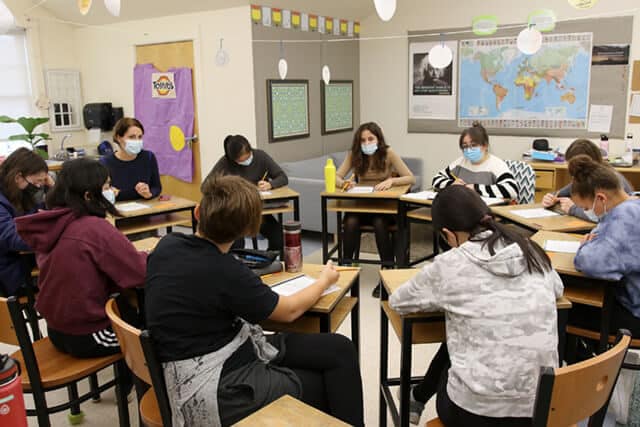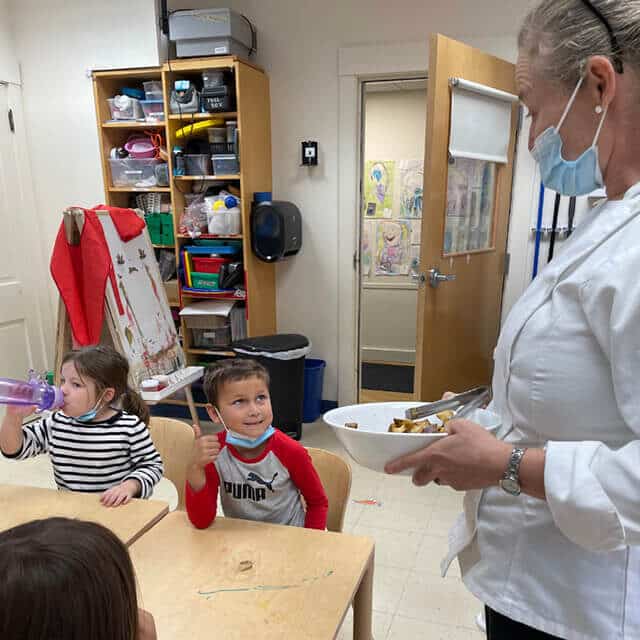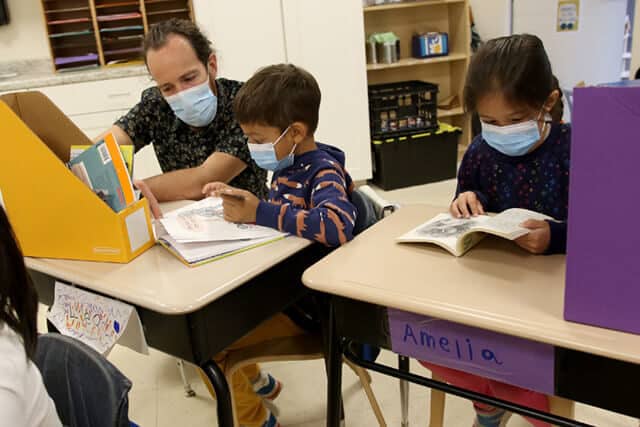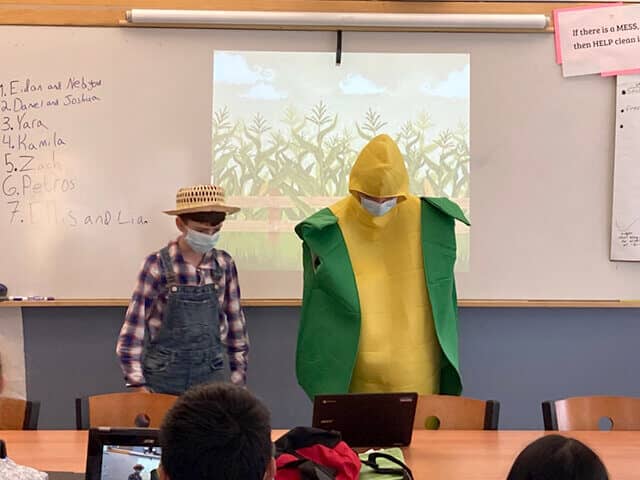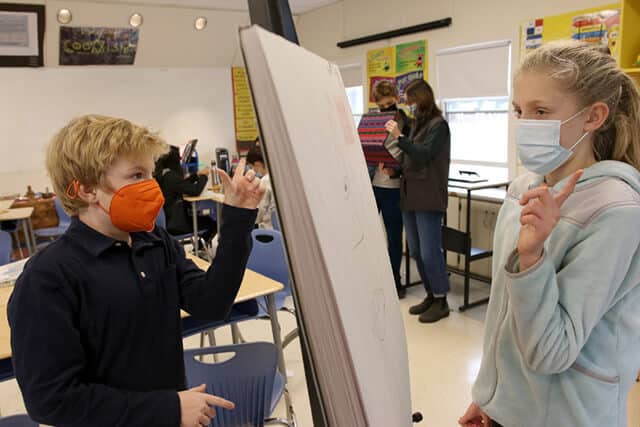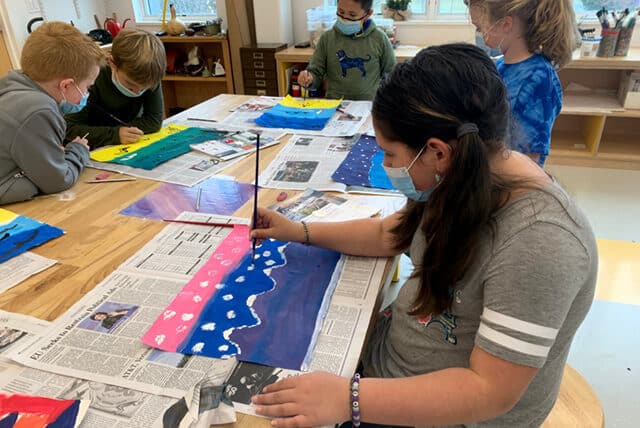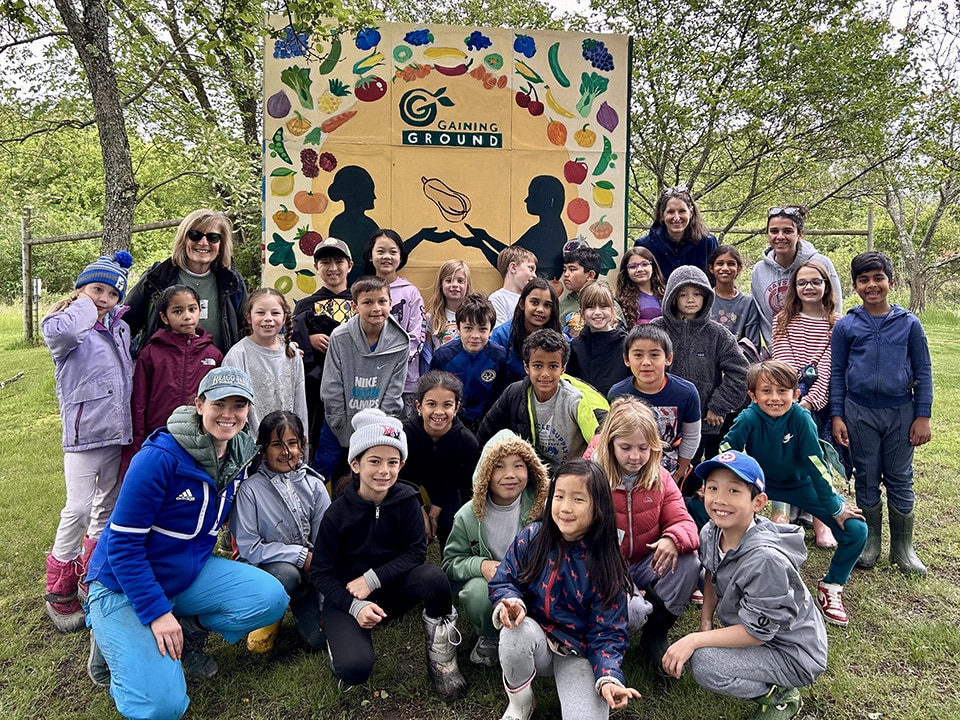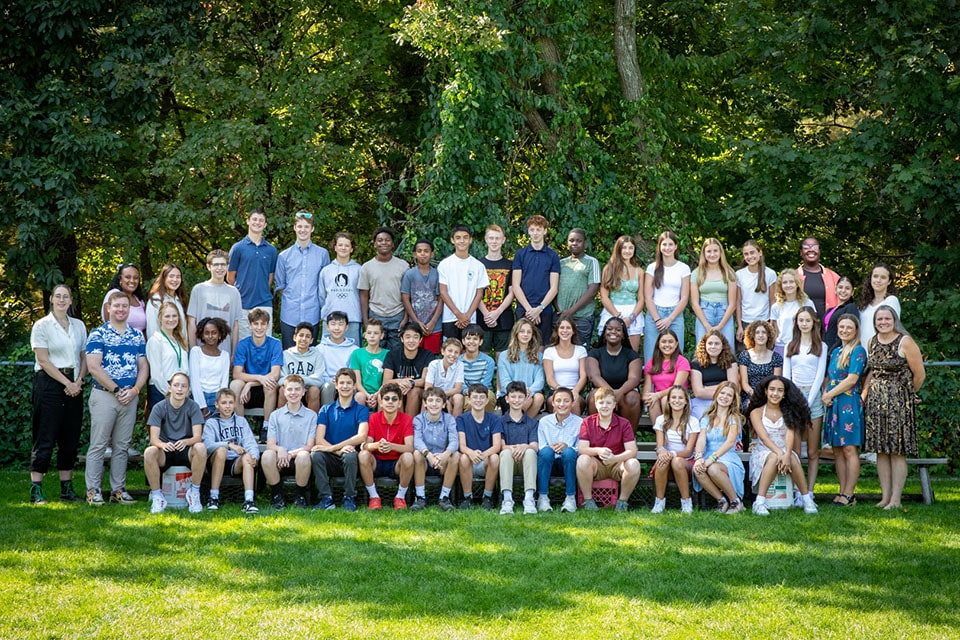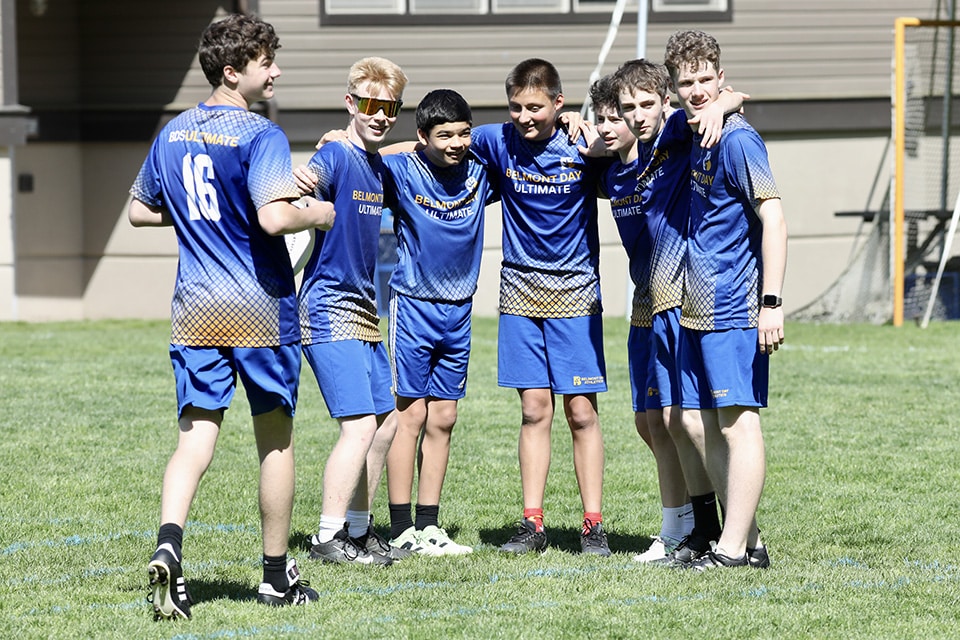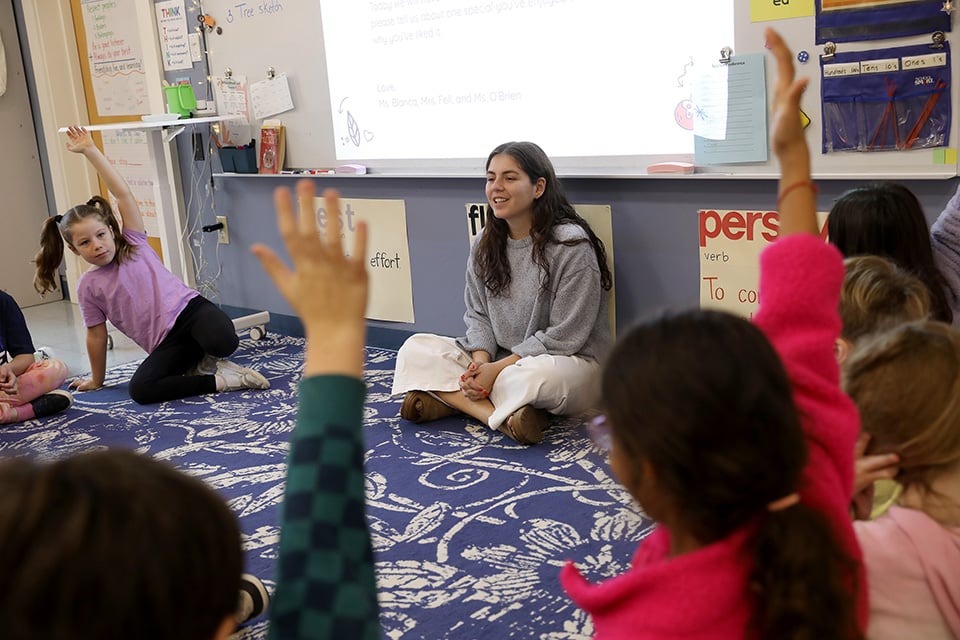Eighth Grade Latin Students Translate a Bear of a Tale
This week, the eighth grade Latin students gathered in a circle to begin the activity of translating a story together with only minimal guidance along the way from their teacher. The students teamed up in the discussion and translation of a story called ‘rex spectaculum dat’ (The King Puts on a Show). The oddly funny tale involving a bear and a party is from their textbook set at Fishbourne Palace in Roman Britain around 80CE. The story, although fictional, focuses on providing students examples through both fictional and historical characters so that students begin to understand various features of life in the ancient world. At this level of Latin for eighth graders, students are becoming familiar with a variety of sentence structures, verb tenses, vocabulary words, and are using all of their accumulated knowledge to work on independently sustaining longer reading passages.
– Nicole Buck, middle school Latin teacher
Seventh Grade Studies the American Food System
In the days before we headed into Thanksgiving break, students in seventh grade social studies concluded their study of the American food system by presenting their final projects. Tasked with conducting an independent research project on their preferred topic pertaining to the food system, seventh graders chose different mediums through which they would present their findings. Topics have ranged from “Food Insecurity and Its Impact on Children” to “Save the Bees,” while formats have ranged from paintings to skits!
– Charlie Baird, grade 7 social studies teacher
Arts Update: Fourth Graders Learn About Landscape Painting
In art class, fourth graders created tempera landscape paintings. After working on color mixing using only the primary colors–red, yellow, and blue–students learned about foreground, middle ground, and background to create a composition for their painting. Each student worked on a design for a landscape, cityscape, or seascape painting. Using 12-by-18-inch paper, they divided their paper into three sections and added a different base coat color in each part of the painting. As a final step, students layered colors of paint and then added textures and details with small brushes to define each part of their painting, working from the detailed foreground to the more general background.
– Kathy Jo Solomon, visual arts teacher
First Graders Wrap Up Unit on Thankfulness
This week, my first graders finished our thankfulness project & book! Students began the thankfulness project by brainstorming ideas of what they are thankful for. Once they generated their personal lists, they were able to begin writing what they are thankful for and why. First graders focused on writing complete and well-organized sentences, complemented by a picture of what they are thankful for. All our combined work was put together into our class Thankfulness Book, and each student was able to bring a copy home. Our work was complemented by an author visit from Elaine Vickers and the read-aloud of her book Thankful, as well as the lower school gratitude paper chain project.
– Geoffrey Fox, first grade teacher
Sixth Grade Receives Many Messages About the Origins of Religions
Maybe you remember that game where someone looks at a drawing and tries to get others who cannot see it to copy it accurately, just by describing it to them. What if instead of a simple drawing, the image that you were trying to convey was “the Truth” about the universe, and you as a messenger were trying to convey it to your people without breaking the cultural rules? What if you were trying your best to duplicate the image that the messenger was trying to describe to you, but it didn’t make sense? This week sixth graders used this experience to explore many historical issues and experiences common to world religions.
In each class, “messengers” from four different “cultural groups” carried their descriptions back to their people. We then discussed a number of questions. Why did almost all of us break the previous rules of our culture in order to get the drawings right? Why were there such big differences in the drawings that we made–not just between the four groups who each heard different messengers, but even among those of us who heard the same messages from the same messenger? What should we do if the messenger tells us to do something we can’t do–like make a pink square when no one in our group has a pink crayon? Is it enough if we try our best? If we mess up, can we start over? How do we decide whether or not we did well–is it enough to include the major elements of the picture? Of course, we were just playing with a very silly drawing–but if we blew this experience up a billion times, and looked again at what happened in the wake of the inspired or enlightened messages of people like Abraham, Moses, Buddha, Jesus, Mohammed? What would we find?
– Dean Spencer, grade 6 social studies teacher
PE Update: The Power of the Humble Jump Rope
Jump ropes are one of our simplest and yet most versatile pieces of equipment in our magical physical education closet. The functionality is all in the name: 1 – It’s a rope; 2) you jump over it. But oh, how varied are the ways we learn to do just that!
For starters, we like to inspire our jumpers with a video of 26-time world-champion Vivien Vajda of Brazil. This video of Vivien has it all: epic moves, incredible scenery, and most importantly, strong messaging. Vivien mentions picking up the sport at age 10 (so the sky is the limit for our jumpers!), the importance of making mistakes and facing doubt, and the joy inherent in being active. Then we tell our students to go pick up a rope and attempt one of the triple backflips Vivien does.
Just kidding! In order to get to Vivien’s level, we have to work on our fundamental skills. So we practice jumping: single bounce, double bounce, backward, ski jumps, heel-to-toe, spin jumps, you name it, we are doing it. Next, we work on turning the rope and timing our jumps. Then, depending on grade level, we might do all manner of activities to practice our skills. Jumping over the “electric rope” that a teacher is swinging in our lower grades, to group jumping and even rope routines in our older grades. Best of all, the jump rope is an easily transportable piece of equipment, so you can practice at school, at home, or at the playground. It’s no wonder some of the world’s best athletes train with jump ropes. And sometimes they wear blue and gold.
– Alex Tzelnic, physical education teacher
From Garden to Table in Pre-Kindergarten
Our pre-kindergartners had an amazing opportunity to see where our food comes from and what it takes to prepare it for eating. It began a few weeks ago when we dug our potatoes out of the BDS garden. The kids had a great time getting messy and discovering the buried treasure of the potatoes. We filled two big buckets with our bounty! This was a fun adventure, but that was only the beginning. Once we got them to the classroom we counted, sorted, and cleaned the potatoes. We discussed how some were big and some were small and noticed all the different colors. The potatoes were given to Chef Lightbody so the kitchen team could prepare wonderful meals for all of BDS. The highlight of this experience was having Chef Lightbody and Chef Hucko bring in roasted potatoes for all of the kids to sample. All of the kids tried the potatoes and most of them asked for second, third, and fourth helpings! We cannot wait to plant the potatoes for next year’s pre-K class in the spring!
– Sharon Gillespy and Nicole Siverls, pre-kindergarten teachers
On the kitchen end, after we received the potatoes from the pre-kindergartners, and had planned a date to later visit the classroom, we decided how we would use them in the meals. The first time we used the potatoes, Chef Hucko made a traditional stew for the faculty. We then used them when we had our own BDS Thanksgiving celebration meal! We roasted them with salt, pepper, olive oil, and some herbs. Across all grades, students enjoyed these potatoes very much and were very thankful to the pre-kindergartners for their work harvesting the potatoes. Finally, we kept a few potatoes so that we could visit pre-kindergarten with something delicious. Last Friday, Chef Hucko cut the potatoes into bite-size pieces, tossed them in some olive oil, salt, and pepper, and then roasted them in the oven. The potatoes got crispy just like french fries. When we visited, we explained to the class how we had cooked the potatoes and answered questions. The cooked potatoes were a real hit!
– Tara Lightbody, school chef and kitchen manager
